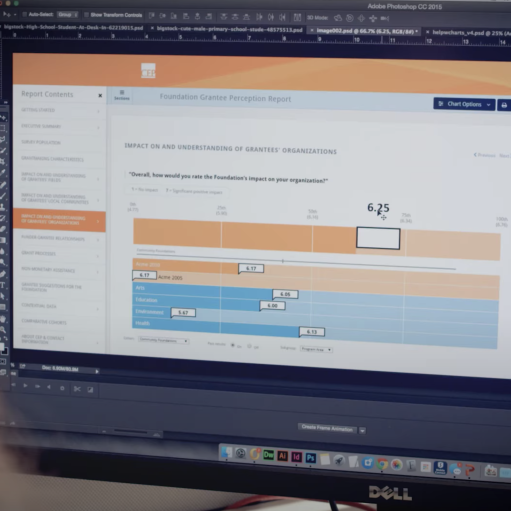Della, The Center for Effective Philanthropy
Helping a nonprofit clear a technical bottleneck so it could scale with existing staff

"We didn’t want tech to be the constraint on our growth."
The Center for Effective Philanthropy (CEP), which helps individual and institutional donors improve their effectiveness, reached a point where it was unable to partner with all the schools and organizations interested in its services because its home-grown tech stack had become a bottleneck.
As the legacy codebase evolved, knowledge grew increasingly siloed, and processes became more cumbersome.
A few key pain points stood out:
It took at least six months to onboard new analysts, partly because of the command-line processes required to retrieve data.
Existing ways of doing things limited the number of clients CEP could serve with the level of skill and attention to detail the organization is known for.
While incremental process changes were possible, major evolutions of CEP’s service were risky given the large legacy codebase.
All of this posed a risk to CEP’s future business. The organization didn’t want technology to be the primary constraint on growth, so it turned to external partners to identify a path forward.
The challenge
Where to start to create the greatest impact
CEP might have continued on its trajectory longer if not for a seismic personnel change: the engineer who built and maintained the 15-year-old codebase announced his retirement. As a team of one, this engineer had been extremely valuable to the organization. Still, his retirement forced CEP to recognize that he had also become a single point of failure.
Early exploration helped CEP recognize that it needed to…
Simplify the command-line-driven processes for accessing data so that analysts could onboard more quickly.
Rearchitect its internal codebase so it could scale operations.
Create documentation so that the system would be easier to maintain, improve, and adapt for people who don’t have deep institutional knowledge.
CEP engaged with a partner that laid out potential SaaS and open-source products that it could integrate with its existing system––hundreds of pages of potential products, in fact. So many that the CEP team wasn’t sure where to start.
So they turned to TXI.


The challenge
Unglamorous groundwork to streamline internal processes
TXI helped CEP think through their growth goals and advised them about which technology improvements would pave the path to reaching those goals. With our guidance, CEP made the decision to tackle infrastructure that would decrease the amount of time analysts had to spend on each project.
To get there, we dove deep on data modernization, streamlining data nomenclature and naming conventions, optimizing business to unlock greater operational capacity, and helping CEP choose software to implement.
Among the specific changes we helped implement:
Introduced Airflow, a cloud-based tool to automate the data pipeline and lay the foundation for future data capabilities
Streamlined data ingestion and reporting capabilities
Reduced custom code and necessary system maintenance
Removed the need for command-line work
Created a data dictionary and ubiquitous language around data
Centralized data storage
Moved business processes from Python to a better-documented tool
Introduced dbt, a data transformation tool that simplified and enhanced the ETL pipeline

The outcome
The power to do more with existing resources
The updates to CEP’s infrastructure enabled the organization to onboard new analysts and associates faster. What's more, they enabled analysts to focus more on achieving business objectives and less on learning complex technical skills.
As we implemented updates, TXI frequently did paired work with CEP’s new engineering team to prepare them to evolve the codebase in a sustainable way as the organization evolves.
Broadly, the new architecture has unlocked additional operational capacity, enabling CEP to do more with the same staff – a crucial capability for any nonprofit.
Curious about how rethinking your technology could open up new capacity? Let’s talk.
